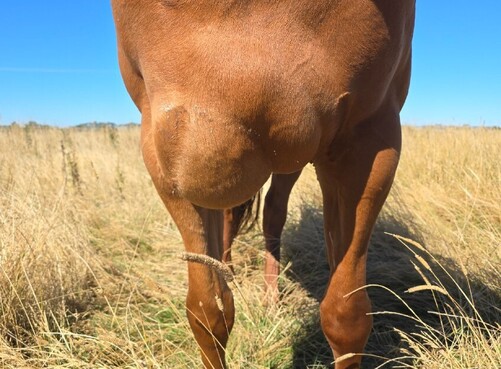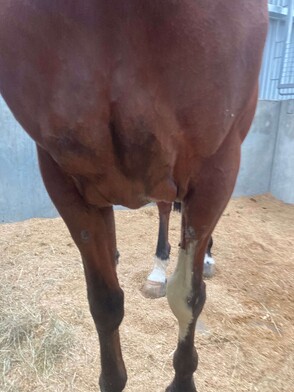What to do if you spot an unusual lump or swelling on your horse.
A sudden large lump discovered on your horse can be quite distressing when first noticed. This is probably going to be a haematoma.
A haematoma is a solid swelling of clotted blood within the tissues. They occur from trauma to an area (often a kick from another horse) and are commonly found on the chest (between the front legs) and also on the hindquarters (down the back legs).
The swelling that follows the trauma can vary from firm to fluctuant and localised pain and heat may also be present.
Haematomas can continue to grow in size over a few days if the area is still actively bleeding.
Initial treatment
First aid for haematomas involves cold hosing and restricting the horse's movement to minimise the amount of bleeding. Cold water therapy can be continued for as long as there is still heat in the area.
It takes approximately two weeks for the blood in the tissue to clot. You will notice the swelling will go from fluid-like to firmer. Once the haematoma has clotted, it may be left to reabsorb, if it is small enough.
However, if it is large, or affecting their ability to move, then it may need to be drained. If it is drained before it is clotted, there is a risk that the bleeding may continue and be difficult to stop.
Follow-up care
Generally, once a haematoma is drained, there is very little aftercare needed; it will just take time for the area to heal.
Sometimes, flushing large haematomas daily is necessary to prevent abscess formation and to keep a drainage hole open.
Depending on the circumstances, antibiotics may be needed as well as anti-inflammatories.
Once the haematoma has healed, scar tissue may remain for some time. This is completely normal, even if it is unsightly for a period of time!
Haematomas are rarely a medical emergency but can be alarming when first discovered. If you think your horse has an unusual lump or swelling, phone the clinic for a chat with a vet about the best approach for your horse.



